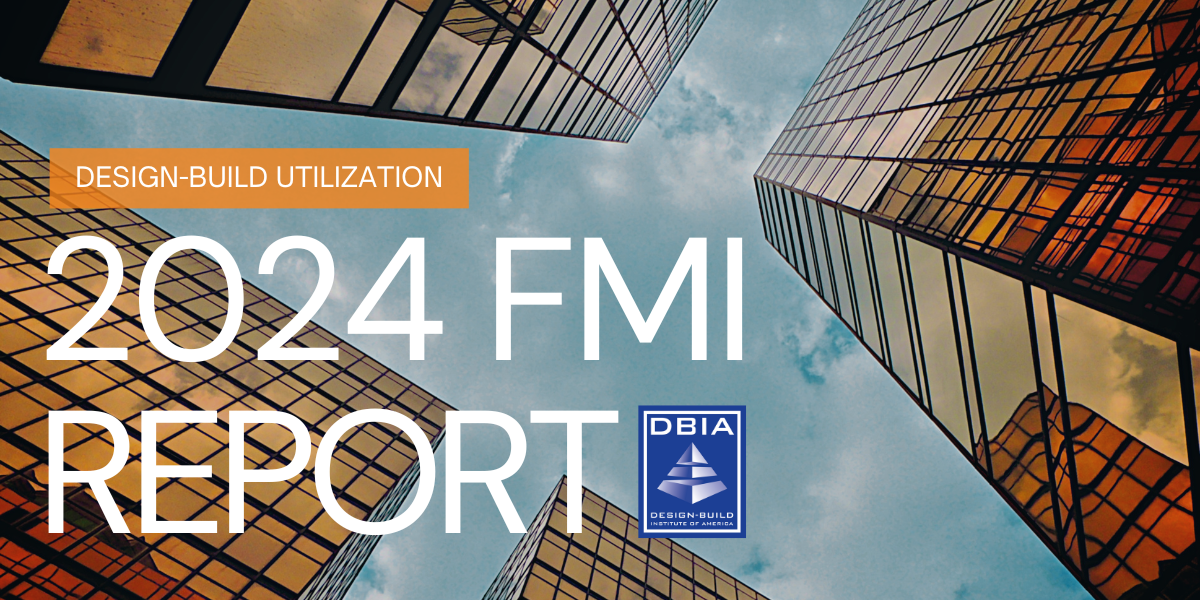Report Confirms Design-Build to Account for Over 47% of Construction Spending by 2028

Design-build remains a leading choice as the preferred project delivery method for complex and time-sensitive projects. According to FMI’s newly released 2024 Design-Build Utilization Study, design-build will represent over 47% of U.S. construction spending by 2028, totaling more than $1.1 trillion over the next five years. This steady growth underscores the method’s resilience and adaptability in addressing today’s construction challenges.
The findings emphasize the critical importance of skilled Owner Advisors (OAs) in navigating complex projects and ensuring effective communication across teams. The study also highlights the growing need to engage Underutilized Business Enterprises (UBEs) to address scalability challenges and promote meaningful participation in design-build project delivery.
A Growing Market
The 2025 study reaffirms design-build’s steady rise, forecasting a 2.9% compound annual growth rate (CAGR) through 2028. Public and private Owners alike are leveraging design-build’s collaborative approach to overcome hurdles like tight schedules, cost uncertainty and supply chain disruptions. As the construction industry continues to adapt to shifting demands, design-build provides a proven pathway to success.
“This report reaffirms the versatility and resilience of design-build, even in uncertain markets,” said Lisa Washington, CAE, DBIA’s Executive Director/CEO. “When executed in accordance with proven best practices and techniques, design-build can continue to drive optimal outcomes for Owners and practitioners nationwide.”
Key Insights from the Study
- Market Growth: Design-build is forecasted to grow at a 2.9% CAGR from 2024 to 2028, with public and private Owners increasingly adopting the method to mitigate challenges such as labor shortages and supply chain disruptions.
- Sector Expansion: Manufacturing, highway/street and educational sectors are expected to see the largest design-build investments. In particular, the education sector is seeing rapid adoption due to its ability to handle tight schedules and evolving needs.
- Progressive Design-Build: Progressive design-build is gaining momentum, particularly for water/wastewater and healthcare projects, offering flexibility and fostering innovation while maintaining cost predictability.
- The Role of Owner Advisors: Skilled Owner Advisors help bridge communication gaps and align team priorities. Clearly defining roles and responsibilities early in the process enhances their effectiveness.
- Talent Retention: The study emphasizes how design-build’s collaborative approach supports talent retention through enhanced team engagement and early involvement, addressing critical workforce challenges in the AEC industry.
- Equity and Inclusion: The report highlights the increasing emphasis on involving UBEs, with strategic mentorship programs and early engagement helping to unlock new opportunities for smaller firms.
What’s Next for Design-Build
Several sectors stand out for their design-build growth potential:
- Manufacturing: Design-build’s efficiency is critical in meeting manufacturing demands, particularly in emerging markets.
- Education and Healthcare: Institutional Owners are embracing design-build as a reliable method for delivering high-stakes projects on time and on budget.
- Water/Wastewater: Progressive design-build’s flexibility makes it an ideal choice for complex infrastructure projects in this sector.
Why It Matters
The study also reveals that design-build’s early collaboration, innovative approaches and integration of UBEs provide unique opportunities to address supply chain challenges and enhance project outcomes. Even as overall construction spending faced challenges in 2024, and likely in 2025 as well, design-build’s growth remains strong. The method’s ability to adapt to market volatility and deliver value in uncertain conditions makes it a cornerstone of the industry’s future.
Learn More About the FMI Report
Learn more about the report:
- Full FMI Report: Download the free full report.
- Webinar: Join FMI’s Emily Beardall on January 29 for an in-depth discussion of the report’s key insights and their implications for the design-build community.
- Podcast: Be on the lookout for February’s episode of the Design-Build Delivers Podcast, where Beardall explores the results and narratives shaping design-build’s future. Available wherever you listen to podcasts.

